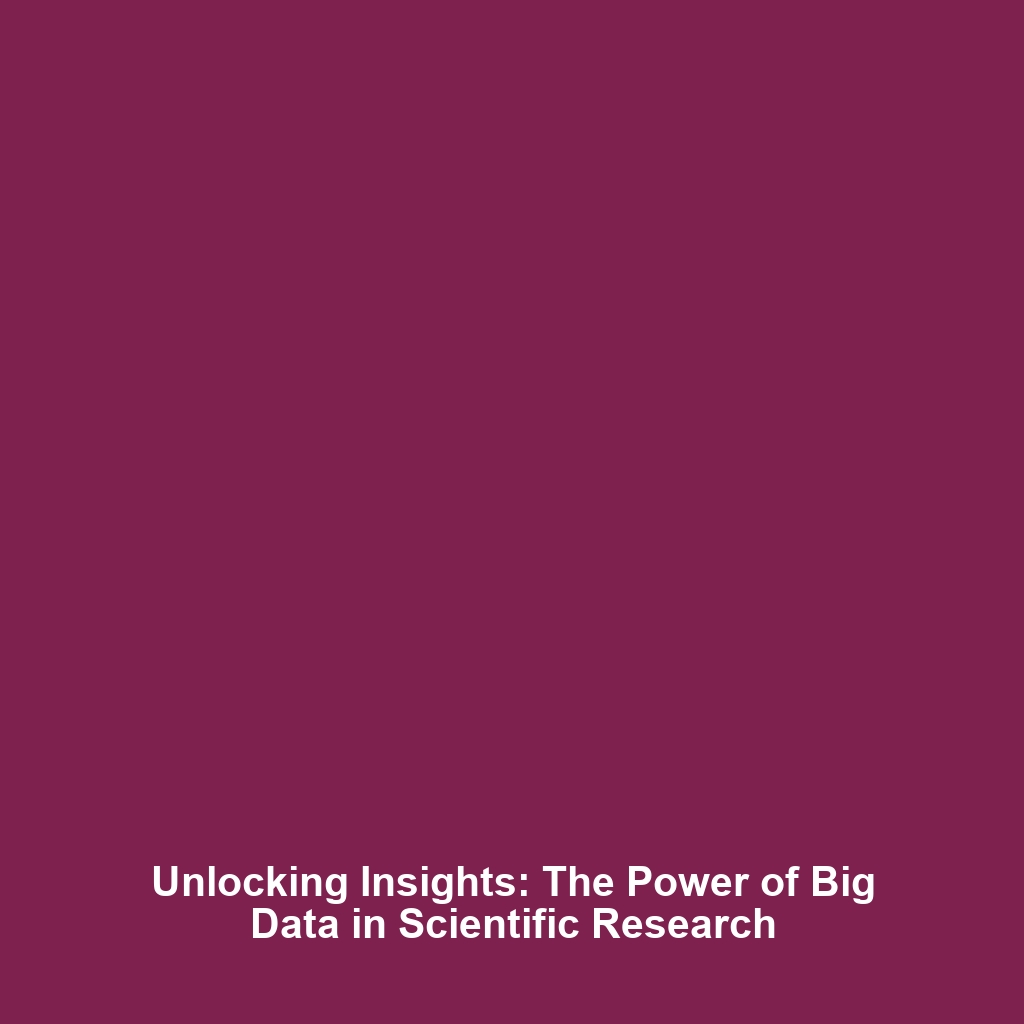Importance of Big Data in Science
Category: Big Data in Science
Topic: Importance: Big data allows scientists to analyze complex phenomena, make predictions, and generate insights at unprecedented scales.
Introduction
Big data has fundamentally transformed the landscape of scientific research. In an era characterized by the production of vast quantities of data from various sources—ranging from experiments to simulations—scientists now harness this data to analyze complex phenomena, make accurate predictions, and generate insights at unprecedented scales. The significance of big data in science is not only confined to its volume, but it also encompasses the variety and velocity of data generated, which creates new opportunities for discovery and innovation. Understanding the importance of big data within the broader context of scientific inquiry is essential as we strive for advancements across disciplines such as genomics, climate science, and social sciences.
Key Concepts
To effectively comprehend the importance of big data in science, it is crucial to explore several key concepts:
Data Volume
Big data refers to the massive sizes of data sets that cannot be handled by traditional data processing software. This substantial volume allows scientists to tap into extensive information pools for more in-depth analysis.
Data Variety
Data can come in various formats, including structured, semi-structured, and unstructured datasets, such as text, images, and videos. This diversity enables comprehensive examination of multiple variables in scientific studies.
Data Velocity
Velocity pertains to the rapid pace at which new data is generated. In scientific research, this means immediate access to fresh data for real-time analysis and decision-making.
Applications and Real-World Uses
Big data findings have led to transformative applications across various scientific fields:
- Genomic Research: Analyzing vast genomic datasets enables scientists to identify genetic markers associated with diseases, enhancing precision medicine.
- Climate Modeling: Big data allows researchers to model climate change scenarios accurately, providing insights for policymakers to mitigate environmental risks.
- Social Science Studies: By analyzing data from social media and surveys, scientists can forecast societal trends and public sentiment.
Current Challenges
Despite its potential, the application of big data in science also comes with challenges:
- Data Privacy: Ensuring the privacy of individuals when handling sensitive data presents significant ethical considerations.
- Data Integration: Merging disparate data sources into cohesive datasets can be technically challenging.
- Data Analysis Skills: There is a growing need for researchers who possess the analytical skills necessary to interpret big data effectively.
Future Research and Innovations
The future of big data in science is characterized by several promising innovations:
- AI and Machine Learning: Advancements in these technologies will enhance the ability to analyze large datasets to improve predictive accuracy.
- Cloud Computing: Increased accessibility to cloud services enables scientists to process and share data collaboratively.
- Blockchain Technology: Offers secure and transparent data management solutions, which is crucial for maintaining data integrity in research.
Conclusion
The significance of big data in science cannot be overstated. Through its ability to analyze complex phenomena, make predictions, and generate unprecedented insights, big data is revolutionizing scientific research and discovery. As scientists continue to explore innovative technologies and methods, the potential for advancement will only grow. To stay informed about the evolving landscape of big data in science, explore related topics and consider engaging with ongoing discussions in the scientific community.

